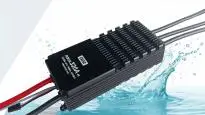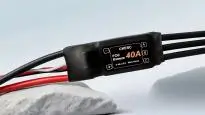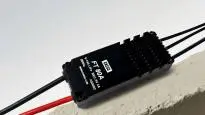The core of a drone's precise flight control lies in its “power regulation hub”—the electronic speed controller (ESC). As the critical component connecting the flight controller to the motors, it directly determines motor speed and power output stability, thereby influencing the drone's maneuverability and safety.
I. ESC Core Positioning: The “Power Commander” of Drones
The core function of an Electronic Speed Controller (ESC) is “translation and execution”:
- Receives control commands sent by the flight controller (such as throttle position and steering signals), converting them into electrical signals recognizable by the motors;
- Regulate the DC voltage/current output of the lithium battery to drive the brushless motor at a specified rotational speed;
- Simultaneously, it provides real-time feedback on the motor's status (such as rotational speed and current), forming a closed-loop control system based on the “command-execution-feedback” principle.
II. Working Principle: The 3-Step Conversion from “Command” to “Power”
The core function of an ESC is “DC to AC conversion + precise voltage regulation.” Its core process consists of three steps, tailored to the operational characteristics of brushless motors:
1. Signal Reception and Decoding
The flight controller transmits commands via protocols such as PWM (Pulse Width Modulation) and SBUS. The ESC's built-in MCU (Microcontroller Unit) receives these signals and decodes the parameters corresponding to the “target rotational speed” (such as duty cycle).
2. Power Conversion and Amplification
Lithium batteries output low-voltage direct current, while brushless motors require three-phase alternating current for operation. The ESC utilizes internal MOSFET power transistors to convert DC into high-frequency three-phase AC. It then adjusts voltage and current levels according to the target rotational speed, enabling “multi-stage power output.”
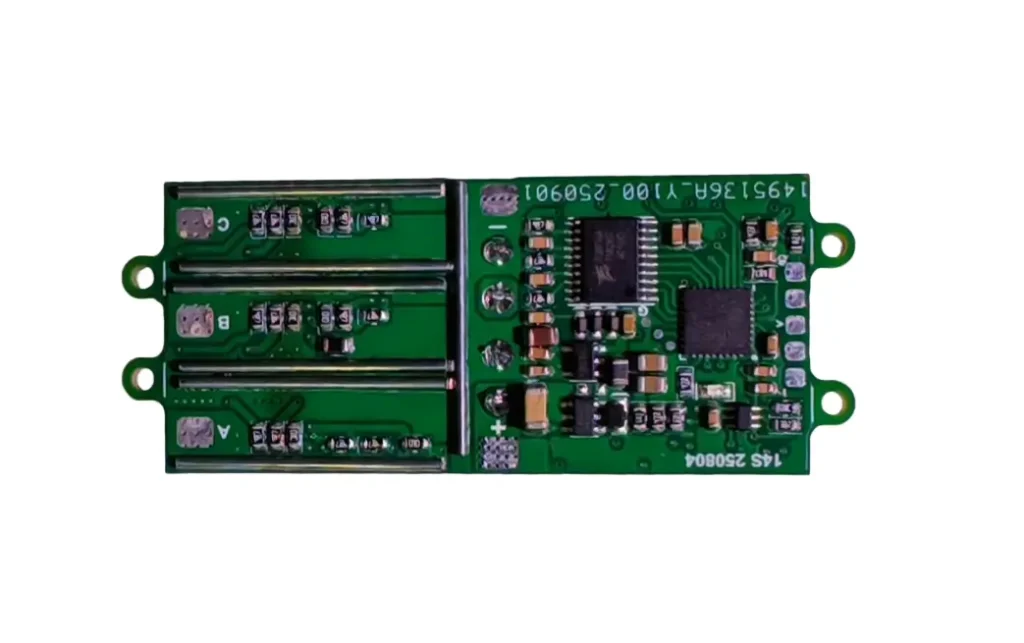
3. Motor Drive and Commutation
The operation of brushless motors relies on “stator magnetic field commutation.” The ESC determines the rotor position by detecting the motor's Hall sensors (or using sensorless algorithms), dynamically switching the conduction sequence of the three-phase currents to drive continuous motor rotation. Simultaneously, it corrects speed deviations to ensure the motor remains stable at the target rotational speed.
III. Operational Mechanism: Four Key Logical Pillars Ensuring Stability
The operation of ESC does not follow a “single-instruction execution” model, but instead employs multiple mechanisms to address complex scenarios during flight:
1. Closed-loop control mechanism
- During motor operation, the ESC continuously acquires real-time RPM feedback signals and compares them against the target RPM set by the flight controller.
- If a deviation occurs (such as a drop in rotational speed due to increased load), the ESC automatically increases the output current to compensate for the speed difference, preventing power loss.
2. Protection Mechanism
To prevent damage to the ESC, motor, or battery, multiple layers of protection logic are built-in:
- Low voltage protection: off by default (can be customized on).
- High voltage protection: prohibit the motor from starting when the power supply voltage exceeds the allowable value.
- Startup protection: If the startup is unsuccessful, the startup current will be limited, and the startup will be restarted automatically.
- Stall protection: If a stall occurs during normal operation (usually caused by external force), try to restart (note that the stall may damage the ESC when the throtor is high).
- Over-temperature protection: When the temperature exceeds 125°C, the maximum output power is slowly reduced, up to 40% of the full throttle power, and the original power is restored after the temperature is reduced.
- Over-current protection: limit the peak current and do not exceed the limit value.
- Overload Protection: When an overload is identified on the motor, the maximum throttle is limited to protect the powertrain.
- Loss of control protection: 200ms after the loss of signal gradually reduce the output power, in 1~2 seconds for rapid throttle reduction to less than 50%, and then slowly reduce the throttle to stop.
3. Starting and Braking Mechanism
- Startup: Utilizes standard startup logic (customizable “soft start” or “rapid start”), with rotational speed rising rapidly and smoothly from zero for safe and reliable operation.
- Braking: Upon receiving a “braking command,” the ESC rapidly reduces motor speed by applying reverse current, suitable for emergency hovering or landing of drones.
The FT series ESC features ultra-fast startup; 100ms high response time; throttle response time from 0 to 100%: 0.6 seconds (partial power).
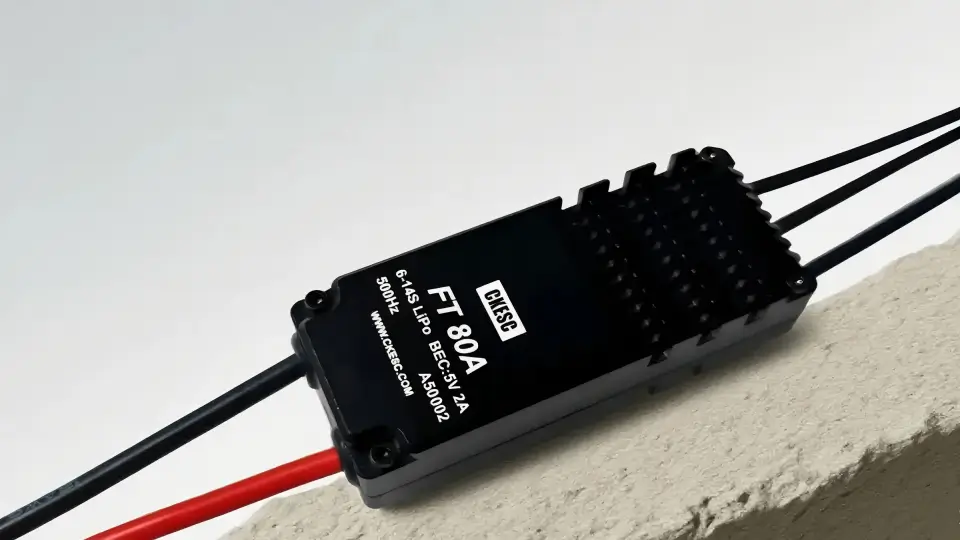
4. Protocol Adaptation Mechanism
Different flight controllers and remote controllers employ distinct signal protocols (such as PWM, PPM, SBUS, CAN). By supporting multiple protocols, the ESC ensures seamless integration with drone systems while enabling “parameter configuration” (e.g., startup mode, protection thresholds). This adaptability accommodates various motor types and flight scenarios (e.g., racing, aerial photography).
IV. Collaborative Logic: Integration of ESC and UAS Systems
- Flight Controller: As the “decision center,” it calculates the target RPM for each motor based on remote control commands and sensor data (such as gyroscopes and GPS), then assigns these values to the corresponding ESCs.
- Motor: The ESC must be matched to the motor's “KV rating”;
- Battery: The maximum output current of the ESC must be matched to the battery's “discharge rate” (C-rating).
Summary
The electronic speed controller (ESC) serves as the “nerves and muscles” of a drone's power system—while the flight controller determines “where to fly,” the ESC dictates “how much power to apply.” Their operation revolves around “signal conversion and power regulation,” with closed-loop control and multiple safeguards ensuring stability. Ultimately, they collaborate with the flight controller, motors, and battery to achieve precise drone control. Whether it's the rapid response of racing drones or the stable hovering of aerial photography drones, both rely on the efficiency and reliability of ESCs.

